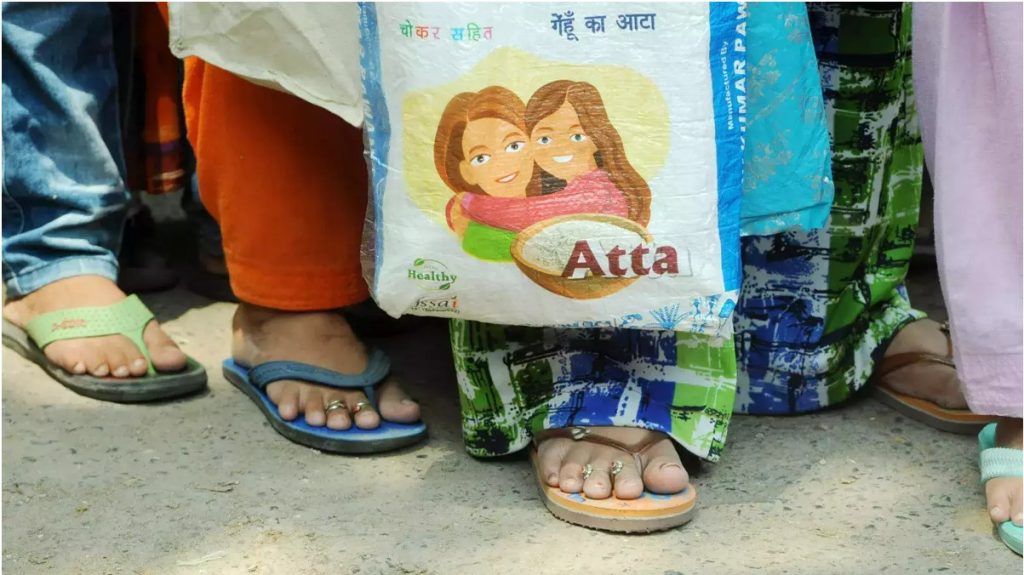Is this plausible? If so, how much credit goes to the BJP?
Listing the estimates of all research papers can be boring. But all show that poverty has plummeted after the economic reforms of 1991 that helped accelerate GDP growth. Clearly fast growth is the best poverty alleviator.
India is a land of a thousand statistical debates. A World Bank study last year by Roy and Weide estimated that poverty declined from 22.5% (270mn people) in 2011 to 10.2% (140mn people) in 2019. This was very substantial but nowhere near the IMF estimates.
Noah Smith, a prominent US blogger-economist, startled Americans by tweeting a chart citing the World Poverty Clock and The Washington Post , showing poverty crashing in just six years in India, from 124mn in 2016 to just 15mn in 2022.
I was about to protest that this was too good to be true. But then Smith himself tweeted additional charts with very different estimates based on different assumptions.
A long-term chart from India’s country profile in the World Bank’s website used an updated poverty line of $2.15 at 2017 prices. This showed the poverty ratio plummeting from 47.6% (441mn people) in 1993 to 10.0% (138mn people) in 2019. The poverty ratio declined throughout the whole period when many different parties ruled.
Both the Congress party (which ruled in 1991-96 and 2004-14) and the BJP (which ruled in 1998-2004 and 2014 onwards) can claim credit. In what roughly corresponds to the Manmohan Singh era, poverty fell from 39.9% (453mn people) in 2004 to 18.7% (248mn people) in 2015. This favourable trend continued after Modi came to power, with the poverty ratio falling further to 10% (138mn people) by 2019.
All [research papers] show that poverty has plummeted after the economic reforms of 1991 that helped accelerate GDP growth. Clearly fast growth is the best poverty alleviator.
Poverty used to be estimated through five-year surveys of consumption, but no such survey data is available after 2011. So, the IMF researchers assume that consumption for all classes has risen in line with GDP growth since 2011.
They make further adjustments for high food subsidies. The 2013 Food Security Act mandated 5kg per head of rice at Rs 3/kg or wheat at Rs 2/kg for poorer people. In addition, when Covid struck, the government mandated an additional five kgs per head absolutely free. With the end of Covid, the additional ration has ended but the original ration is now free. Adjusting for cheap food is important to accurately estimate poverty.
In surveys, Indian consumers used to be asked to recall consumption of all items over a uniform 30 days. However, people reported significantly higher consumption when asked to recall how much they consumed in the preceding week, especially for perishables. Using a mixed recall period (weekly for perishables) is now India’s standard methodology.
Based on mixed recall, BBV estimate that the poverty ratio declined from 32.7% in 2004 to 7.4% in 2014 (Congress era) and further to 2.5% by 2020 under BJP rule. The heavy lifting was done by Congress, and the BJP followed suit.
The researchers then adjust for highly subsidised food. On this adjusted basis, the poverty ratio fell from 31.9% in 2004 to 5.1% in 2014, in the Congress era. It declined further to 0.86% in 2020, in the Modi era.
World Bank researchers caution against the assumptions of BBV. They agree that poverty has crashed but think 2019 poverty was 12 times higher than the BBV estimate! Economist Jean Dreze says real rural wages have risen very little in the last eight years.
How much difference did cheap food make after 2013? Not much. For 2020, BBV estimate that the poverty ratio was 2.5% without adjustments for subsidised food and 0.86% after adjustments. Evidently poverty plummeted mainly because of rapid GDP growth.
When highly subsidised food under the National Food Security Act was first proposed, some economists feared fiscal disaster. One calculated that the food subsidy might be as much as 3% of GDP. In practice it was less than half as much. Besides, GDP grew much faster than the food subsidy, making it fiscally very affordable. Even with an expanded ration of 10 kg per head after Covid, the food subsidy came to barely one percent of GDP in 2022.
With Covid petering out and reversion to the original ration of 5 kg per head (now totally free), the fiscal cost will fall to just 0.63% of GDP. That demonstrates how rapid GDP growth makes welfare benefits affordable.


